Issue № 10(22)
DOI: 10.33098/2078-6670.10.22.99-109 Fedyk L.B. FORMS OF COUNTERACTION TO THE YOUTH SUBCULTURAL MOVEMENT IN THE USSR IN THE 1940S-1960: HISTORICAL AND LEGAL ASPECT
Fedyk L.B. FORMS OF COUNTERACTION TO THE YOUTH SUBCULTURAL MOVEMENT IN THE USSR IN THE 1940S-1960: HISTORICAL AND LEGAL ASPECT
Goal. The aim of the study is to analyze the main forms and methods of counteraction of the state and society in the USSR to the youth subcultural movement in 1940-1960. The method covers a set of methods and logical sequence of their use, which was determined by issues and features of historical and legal research. Methods. The use of general scientific methods of analysis, synthesis and abstraction allowed to empirically study the youth subculture in 1940 – 1960’s. Historical and legal method allowed to consider the youth subculture as a phenomenon of a particular era, taking into account the influence of economic, social and ideological factors. The comparative law method in our study was useful for comparing the measures applied to the youth subculture by party, youth organizations, law enforcement agencies and educational institutions. Results. The study found that the youth subcultural movement in the USSR was heterogeneous. It was found that, despite the apolitical nature of the movement, within the Cold War and confrontation with the West, it was seen as a threat to the existing social order and contrary to official ideology. This created the preconditions for combating it, which were carried out with the involvement of the party and Komsomol apparatuses. Scientific novelty. It was established that the main forms of struggle against the youth subcultural movement were extrajudicial, which provided for moral pressure, expulsion from the Komsomol, an educational institution, deprivation of a scholarship, and public humiliation. Practical significance. It is that the main provisions and conclusions set out in the study can be used: 1) in research related to the study of the features and legal principles of the repressive policy of the Soviet government; 2) in the educational process, during the teaching of sections relating to the state and legal development of Central and Eastern Europe.
Key words: subculture, youth, stilyagi, Komsomol, coercion.
References
1. Aleksenko, F. (2017, April 5). Druzhnoyu tolpoy: chem zanimalis druzhinniki v SSSR [In a friendly crowd: what did the vigilantes do in the USSR]. Obshchestvo. Retrived from: https://www.rbc.ru/photoreport/05/04/2017/58e4b7fe9a7947ddf1d661db
(in Russian)
2. Style story. Youth subculture in the USSR (1950-1960) Retrived from: https://smekni.com/a/134735/storya-stilyag-molodzhna-subkultura-v-srsr-1950-1960-rr/ (accessed 11 October 2020) (in Ukrainian)
3. Kozlov, V. (2019). Stilyagi: molodye, smelye, svobodnye [Hipsters: young, brave, free]. M.: Amfora. Retrived from: https://www.litres.ru/vladimir-kozlov/stilyagi/chitat-onlayn/ (in Ukrainian)
4. Kolodii, A.M., Oliinyk, A.Iu. (2004). Prava liudyny i hromadianyna v Ukraini: navch. posib. [Human and civil rights in Ukraine: a textbook]. K.: YurinkomInter. (in Ukrainian)
5. Compass: A Handbook on Human Rights Education for Youth. Retrived from: https://www.coe.int/uk/web/compass/what-are-human-rights- (accessed 2 November 2020) (in Ukrainian)
6. Kondrashkov, N.N. (1989). Protiv zakona i sovesti [Against the law and conscience]. M.: Yuridicheskaya literatura. (in Russian)
7. USSR Constitution of 1936. Retrived from: http://www.hist.msu.ru/ER/Etext/cnst1936.htm (accessed 23 October 2020) (in Russian)
8. Kuzovkin, G.V. (1996). Partiyno-komsomolskiye presledovaniya po politicheskim motivam v period ranney «ottepeli» [Party and Komsomol persecution for political reasons during the early “thaw”]. Korni travy: sb. st. molodykh istorikov / pod red. L.S. Ereminoy. E.B. Zhemkovoy (pp. 100-124). M. 1996. (in Russian)
9. Lastovka, T. V. (2011). Tuneyadstvo v SSSR (1961-1991): yuridicheskaya teoriya i sotsialnaya praktika [Parasitism in the USSR (1961-1991): legal theory and social practice]. Antropologicheskiy forum, 14, 212-229. (in Russian)
10. Lozynska, Kh. (2012). Osnovni stylovi zasady rozvytku kostiuma «styliah» [The main styles ambush the development of the suit “style”]. Narodoznavchi zoshyty, 1, 108-112. (in Ukrainian)
11. Machulina, I. I. (2013). Sotsiolohiia molodi: konspekt lektsii z dystsypliny dlia studentiv spetsialnosti «Sotsiolohiia» [Sociology of youth: a synopsis of lectures on the discipline for students majoring in “Sociology”]. Dniprodzerzhynsk, DDTU. (in Ukrainian)
12. Muzalevskaya, Yu. (2007). Stilyagi kak fenomen otechestvennoy poslevoennoy mody [Hipsters as a phenomenon of domestic post-war fashion]. Trudy Sankt-Peterburgskogo gosudarstvennogo instituta kultury, 172, issue 2, 122-127. (in Russian)
13. Zubkova, E.Yu., Zhukova, T.Yu. (Comps.). (2010). Na «krayu» sovetskogo obshchestva: sotsialnye marginaly kak obekt gosudarstvennoy politiki 1945–1960-e gg. [On the “edge” of Soviet society: social marginal people as an object of state policy 1945-1960s.]. M.: ROSSPEN. (in Russian)
14. On amendments and additions to the Criminal and Criminal Procedure Codes of the RSFSR: Decree of the Presidium of the RSFSR Supreme Council (1970, February 25) Retrived from: http://www.libussr.ru/doc_ussr/usr_7253.htm (accessed 2 November 2020) (in Russian)
15. On strengthening the struggle against persons who evade socially useful labor and lead an antisocial parasitic lifestyle: Decree of the Presidium of the Supreme Soviet of the RSFSR (1961, May 4) Retrived from: https://web.archive.org/web/20160305030157/http://uristu.com/library/sssr/usr_5681/ (accessed 4 November 2020) (in Russian)
16. On the approval of the Criminal Code of the RSFSR: Law of the RSFSR (1960, October 27) Retrived from: : https://zakonbase.ru/content/part/417246 (accessed 4 November 2020) (in Russian)
17. Okhotniki za podtyazhkami [Bracers hunters]. Komsomolskaya pravda, 1960. 1 iyulya. (154) (in Russian)
18. Pahiria, O. (2012, January 19). Pid zakhidnym brendom: «styliazhnyi» sposib zhyttia molodi v SRSR buv formoiu sotsiokulturnoho protest [Under the Western brand: the “stylish” way of life of young people in the USSR was a form of socio-cultural protest]. Ukrainskyi tyzhden. 3 (220) (in Ukrainian)
19. Rymarenko Yu.I. (Ed.). (2006). Pryvatne zhyttia i politsiia. Kontseptualni pidkhody. Teoriia ta praktyka. [Privacy and police. Conceptual approaches. Theory and practice]. K.: KNT (in Ukrainian) https://pidru4niki.com/10611207/pravo/svoboda_dumki_slova
20. Rot-Ay, K. (2004). Kto na pedestale. a kto v tolpe? Stilyagi i ideya sovetskoy «molodezhnoy kultury» v epokhu «ottepeli» [Who is on the podium and who is in the crowd? Hipsters and the idea of Soviet “youth culture” in the era of the “thaw”]. Neprikosnovennyy zapas: debaty o politike i kulture, 4, 26-33. (in Russian)
21. Subkultura sovetskikh vremen: chem zhili stilyagi-antisovetchiki. Retrived from: https://bigpicture.ru/?p=652558 (accessed 3 November 2020) (in Russian)
22. The Criminal Code of the RSFSR dated October 27, 1960. Retrived from: https://lawrussia.ru/bigtexts/law_3558/page5.htm (accessed 4 November 2020) (in Russian)
23. Tsipurskiy, G. V. (2013). «Komsomolu prikhoditsya obyavit besposhchadnuyu i reshitelnuyu voynu protiv vsekh tipov stilyag». Politika v otnoshenii «vesternizirovannoy» molodezhi v Sovetskom Soyuze pri N. S. Khrushcheve [“The Komsomol has to declare a merciless and decisive war against all types of dudes.” Policy towards “Westernized” youth in the Soviet Union under Nikita Khrushchev]. Noveyshaya istoriya Rossii, 3, 55–83. (in Russian)
24. Yarlykova, O. A. (2015). Osobystyi dosvid hromadian URSR v osvoienni «Zakhodu» v 1953–1964 rr. [Personal experience of the citizens of the USSR in the development of the “West” in 1953-1964]. Aktualni problemy filosofii ta sotsiolohii: nauk.-prakt. zhurn, 5, 220-224. (in Ukrainian)



